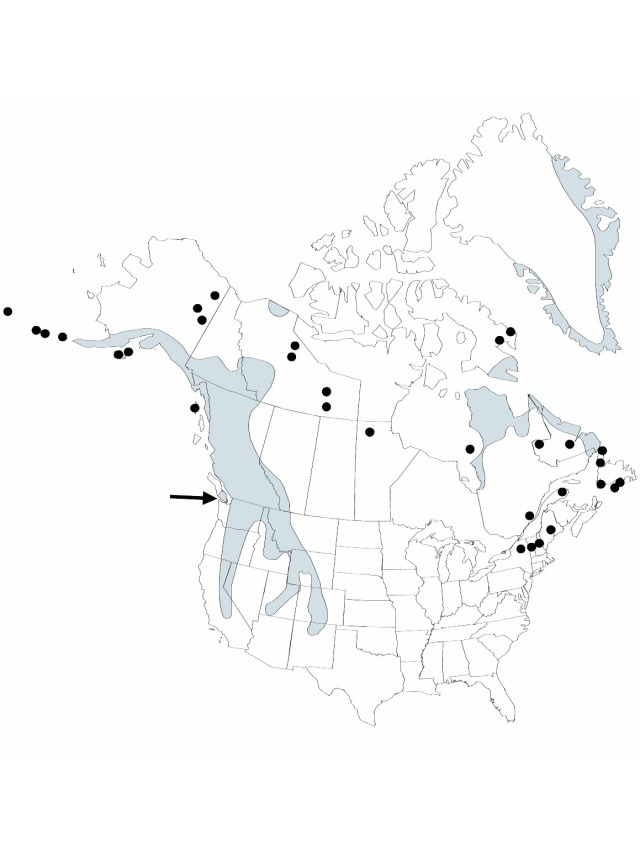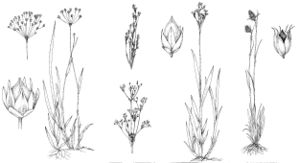Difference between revisions of "Luzula spicata"
in J. Lamarck and A. P. de Candolle, Fl. France, ed. 3 1: 161. 1805.
FNA>Volume Importer |
imported>Volume Importer |
||
| (3 intermediate revisions by 2 users not shown) | |||
| Line 1: | Line 1: | ||
{{Treatment/ID | {{Treatment/ID | ||
|accepted_name=Luzula spicata | |accepted_name=Luzula spicata | ||
| − | |accepted_authority=(Linnaeus) | + | |accepted_authority=(Linnaeus) de Candolle |
|publications={{Treatment/Publication | |publications={{Treatment/Publication | ||
| − | |title=in J. Lamarck and A. P. de Candolle,Fl. France, ed. 3 | + | |title=in J. Lamarck and A. P. de Candolle, Fl. France, ed. 3 |
|place=1: 161. 1805 | |place=1: 161. 1805 | ||
|year=1805 | |year=1805 | ||
}} | }} | ||
|common_names=Spiked wood rush | |common_names=Spiked wood rush | ||
| + | |special_status={{Treatment/ID/Special_status | ||
| + | |code=F | ||
| + | |label=Illustrated | ||
| + | }} | ||
|basionyms={{Treatment/ID/Basionym | |basionyms={{Treatment/ID/Basionym | ||
|name=Juncus spicatus | |name=Juncus spicatus | ||
|authority=Linnaeus | |authority=Linnaeus | ||
| + | |rank=species | ||
|publication_title=Sp. Pl. | |publication_title=Sp. Pl. | ||
|publication_place=1: 330. 1753 | |publication_place=1: 330. 1753 | ||
| Line 38: | Line 43: | ||
-->{{#Taxon: | -->{{#Taxon: | ||
name=Luzula spicata | name=Luzula spicata | ||
| − | + | |authority=(Linnaeus) de Candolle | |
| − | |authority=(Linnaeus) | ||
|rank=species | |rank=species | ||
|parent rank=subgenus | |parent rank=subgenus | ||
| Line 50: | Line 54: | ||
|distribution=Circumpolar;Greenland;St. Pierre and Miquelon;Alta.;B.C.;Man.;Nfld. and Labr.;N.W.T.;Nunavut;Que.;Yukon;Alaska;Calif.;Colo.;Idaho;Maine;Mont.;Nev.;N.H.;N.Mex.;N.Y.;Oreg.;Utah;Vt.;Wash.;Wyo.;Eurasia. | |distribution=Circumpolar;Greenland;St. Pierre and Miquelon;Alta.;B.C.;Man.;Nfld. and Labr.;N.W.T.;Nunavut;Que.;Yukon;Alaska;Calif.;Colo.;Idaho;Maine;Mont.;Nev.;N.H.;N.Mex.;N.Y.;Oreg.;Utah;Vt.;Wash.;Wyo.;Eurasia. | ||
|reference=None | |reference=None | ||
| − | |publication title=in J. Lamarck and A. P. de Candolle,Fl. France, ed. 3 | + | |publication title=in J. Lamarck and A. P. de Candolle, Fl. France, ed. 3 |
|publication year=1805 | |publication year=1805 | ||
| − | |special status= | + | |special status=Illustrated |
| − | |source xml=https:// | + | |source xml=https://bitbucket.org/aafc-mbb/fna-data-curation/src/2e0870ddd59836b60bcf96646a41e87ea5a5943a/coarse_grained_fna_xml/V22/V22_3.xml |
|genus=Luzula | |genus=Luzula | ||
|subgenus=Luzula subg. Luzula | |subgenus=Luzula subg. Luzula | ||
Latest revision as of 20:30, 5 November 2020
Culms densely cespitose, reddish, 3–33 cm, base thick, extending 1–8 cm into soil. Leaves: sheath throats densely hairy; basal leaves erect, channeled, linear, 2–15 cm × 1–4 mm, apex not callous; cauline leaves 2–3. Inflorescences panicles of dense, nodding, spikelike clusters (each 1–25 mm), often interrupted by 10–70 mm; proximal inflorescence bract conspicuous, generally exceeding inflorescence; bracts clear; bracteoles clear, margins ciliate, apex narrow, extended. Flowers: tepals brown with clear margins or very pale throughout (outer whorl bristle-pointed), 2–2.5 mm; outer whorl longer than inner whorl; anthers ± equaling filaments. Capsules pale to dark brown or blackish, round (apex ± acute), generally shorter than tepals, apex ± acute. Seeds brown, cylindric-ovoid, body 1–1.2 mm; caruncle 0.2 mm. 2n = 24.
Phenology: Flowering and fruiting summer.
Habitat: Alpine slopes and heaths, dry or damp situations among grasses, herbs, or lichens, and in subalpine forests
Elevation: 0–3700 m
Distribution

Circumpolar, Greenland, St. Pierre and Miquelon, Alta., B.C., Man., Nfld. and Labr., N.W.T., Nunavut, Que., Yukon, Alaska, Calif., Colo., Idaho, Maine, Mont., Nev., N.H., N.Mex., N.Y., Oreg., Utah, Vt., Wash., Wyo., Eurasia.
Discussion
The culms of Luzula spicata are thick and reddish with bases extending 1–8 cm into the soil; sheath throats are densely hairy; basal leaves are erect, linear, and channeled; inflorescence bracts are conspicuous and often exceed glomerules; and bracteoles have narrow and extended apices.
Selected References
None.
